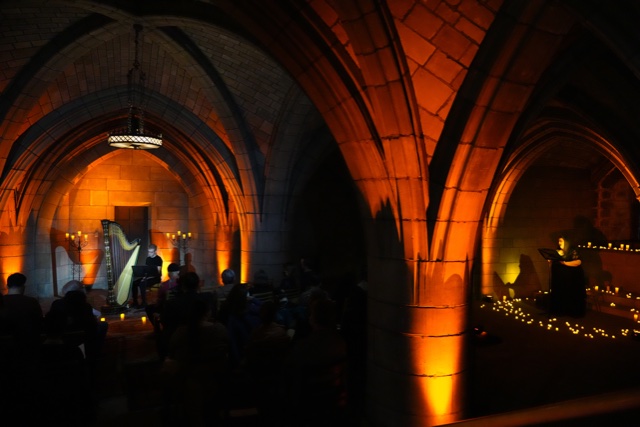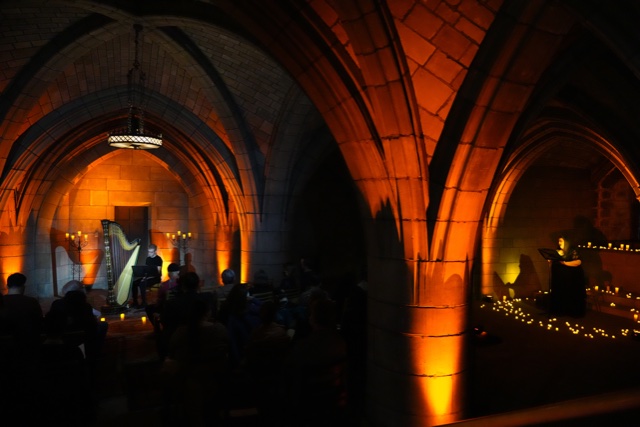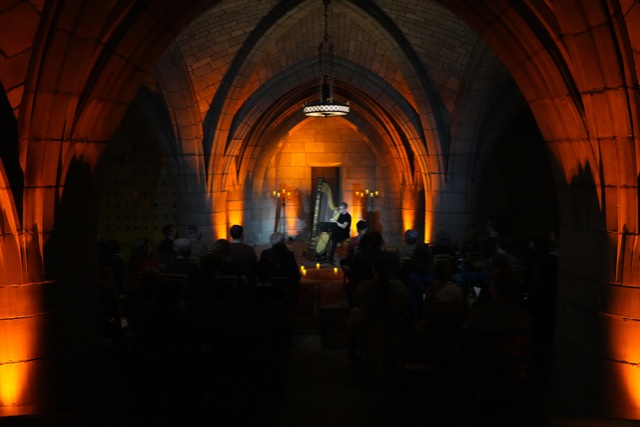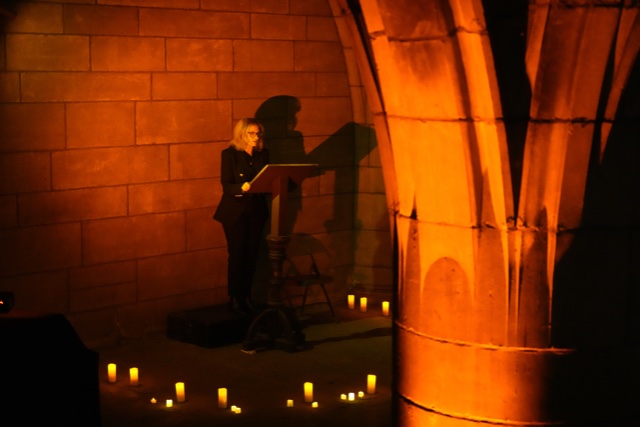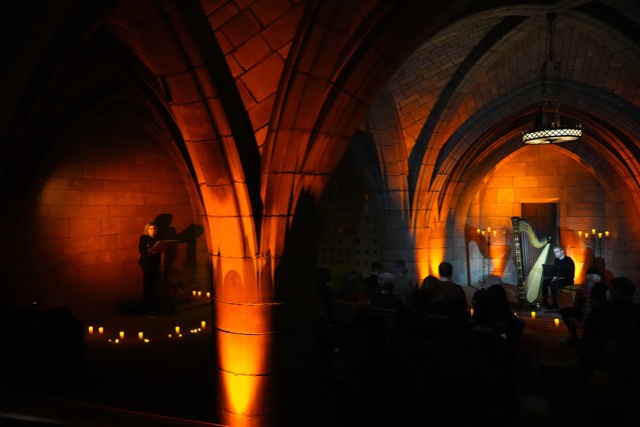Death of Classical Presents Nico Muhly's The Street
Live Artists Parker Ramsey, Monica Wyche and Hannah Spierman
By: Susan Hall - Oct 16, 2022
The Street is a triptych of tones and textures created by composer Nico Muhly and writer Alice Goodman. Goodman points out that this is not a libretto. It is a meditation on Christ’s walk up the stations of the cross in Jerusalem on the day he would be crucified by his fellow Jews. It set on a street, on a street where we live. Andrew Ousley, the creator and curator of these events, has a knack for capturing present moments. Here we have suffering and redemption from its pain as we recover from a pandemic.
Goodman’s text is interspersed with music on the harp and plainchant solo singing by Hannah Spierman, a soprano. Spiderman, a graduate of the New England Conservatory, has recently performed in Weber’s Der Freischütz, as Tatyana in Tchaikovsky’s Eugene Onegin as well as soloist with New York Choral Society and Canterbury Choral Society for Brahms’ Ein deutsches Requiem.
In the crypt of the Church of the Intercession in Harlem, New York, different elements are compellingly differentiated. Words spoken by Monica Wyche are smoothed over, even when they are ugly and harsh. The plainchant is uniform. Yet as Spierman’s voice reverberates through the underground stone arches, its purity is magnified. We remember that stone is an acoustic wonder.
The harpist, Parker Ramsey, refers to himself as a recovering organist. After a huge success transcribing Bach’s Goldberg Variations for the harp, he was looking for a second work when he met Nico Muhly who has liturgical background. The hymn Onward Christian Soldiers is lifted in its entirety in his opera Dark Sisters.
Muhly had never previouslyt written for the harp. The learning curve was steep. “Parker and I talked and Face-Timed a lot, and I studied a bunch of music written for the harp, which is how you learn to write for any instrument,” Muhly says. “I would send Parker random scraps of what I’d written and ask him whether it worked on the harp, and if not, why not. I’m very happy to be told I’m doing something wrong, and I was able to work out how not to make the same mistake again. It was a very collaborative project.”
Ramsey was astonished by the perceptive musical notes the composer wrote, honoring and celebrating all the harp’s possibilities.
“The most challenging part of the work is stamina,” he says. “The Street is, in all likelihood, the largest-scale work for solo harp, and like trumpeters, harpists are generally trained to not play more than five minutes at a time, because the harp is quite heavy on your body. So, stamina in this piece is a major issue.”
Muhly, in discovering the mysteries of composing for the harp, has also found ways to help us experience the emotions generated by Goodman’s words. Christ’s falls stumble on the harp’s strings The path to death and description marches forward in plucks.
The harp is one of the few instruments that creates sound with direct touch. There is no barrier between you and the sound. Beautiful notes and powerful feelings are one.
Station I: Jesus is condemned to death
Station II: Jesus takes up his Cross
Station III: Jesus falls for the first time
Station IV: Jesus meets his Mother|
Station V: Simon of Cyrene helps Jesus carry the Cross
Station VI: Veronica wipes the face of Jesus
Station VII: Jesus falls for the second time
Station VIII: Jesus meets the women of Jerusalem
Station IX: Jesus falls for the third time
Station X: Jesus is stripped of his garments
Station XI: Jesus is nailed to the Cross
Station XII: Jesus dies on the Cross
Station XIII: Jesus is taken down from the Cross
Station XIV: Jesus is laid in the tomb

